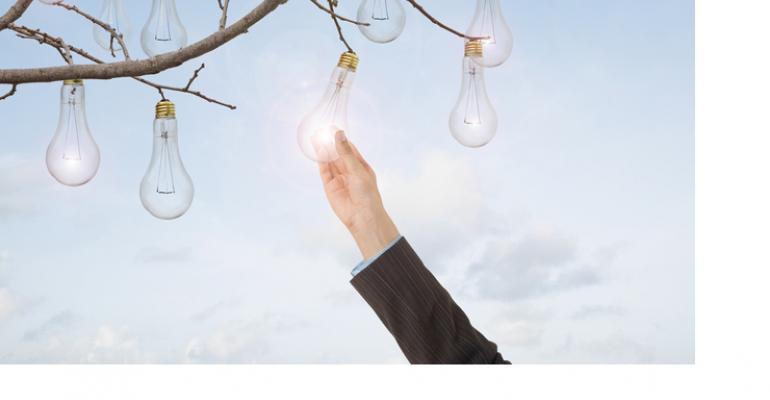It was good fortune that the American Society of Association Executives was able to host its 17th annual Great Ideas Conference from March 1-3, 2020 at the Grand America Hotel in Salt Lake City. As one of the last in-person business events to happen before the coronavirus outbreak became a pandemic that halted travel around the globe, the event saw just two cancellations out of 430 registered attendees who are “senior personnel with strategic-level responsibilities,” says Karen Bernstein, then a senior manager of learning at ASAE (and in 2023, the associate director of leadership and governance learning.)
“These are people who need to know as much as possible about change management—how to do business differently in order to succeed in a changing landscape,” she adds. “This conference pushes attendees to think creatively and collaborate with peers so they can use innovation to move the needle in their organizations.”
ASAE demonstrated creative thinking of its own in the planning and execution of the event. Here are four concepts that Bernstein and her team implemented to fulfill the lofty objectives of the conference.
A unique call-for-proposals process. Bernstein used what she describes as “three different buckets” for attendees and others to submit ideas for session content. Starting nine months out, there was a traditional solicitation for interested parties to pitch topics they could present. But the event committee also curated a list of 27 issues that would be compelling for this audience, and then encouraged potential presenters to develop the most useful session for any of those issues. “We simply said, ‘Here are the things we want to address; what do you think is the best way to go about it?’ This was new for us, and it actually drove the most entries.” Lastly, registrants were asked to propose speakers or presenters they knew of who could make an impact on their peers; in other words, a greatly expanded search committee that knew precisely what would interest the audience.
 Learning circles. To make choosing sessions easier, ASAE offered attendees the opportunity to be part of a learning circle. Comprised of eight attendees plus a guide, each circle met at least once daily so participants could share what they learned in sessions they attended or in conversations they had with other attendees. “No two groups are alike in the way they operate and in the content they discuss,” Bernstein says. The first circle meetings happened right before the conference’s opening session on Sunday so people could meet and establish the group’s process. From there, the circles sat together during breakfast and lunch on Monday and Tuesday. Most also met later on Tuesday as well. “We’re also thinking that some of them will remain as an intact peer group that keeps communicating and sharing after the event,” Bernstein says.
Learning circles. To make choosing sessions easier, ASAE offered attendees the opportunity to be part of a learning circle. Comprised of eight attendees plus a guide, each circle met at least once daily so participants could share what they learned in sessions they attended or in conversations they had with other attendees. “No two groups are alike in the way they operate and in the content they discuss,” Bernstein says. The first circle meetings happened right before the conference’s opening session on Sunday so people could meet and establish the group’s process. From there, the circles sat together during breakfast and lunch on Monday and Tuesday. Most also met later on Tuesday as well. “We’re also thinking that some of them will remain as an intact peer group that keeps communicating and sharing after the event,” Bernstein says.
More general-session speakers in less time. While breakout sessions at the event were 60 minutes long to allow for plenty of peer-to-peer discussion, ASAE scheduled two or even three presenters on different topics in the 90-minute general session each day. “We kept each one short and had them explore different aspects of handling change,” Bernstein says. There were two 30-minute presentations on Sunday, three 20-minute presentations on Monday, and two 30-minute presentations on Tuesday. And during the event’s closing session, a working lunch on Tuesday, ASAE used the “Ignite” presentation format: The four presenters were permitted only five minutes each, using 20 slides that automatically advance every 15 seconds.
Off-Site “Learning Intensives.” These three-hour sessions are “opportunities to explore displays of innovation in the host community,” Bernstein says. There were four such options during the event, each of which accommodated 40 people. On day one, the two intensive sessions focused on sustainability—one went to a public-art installation created almost entirely from materials discarded by local businesses and conferences, while the other went to the Salt Palace Convention Center to examine its on-site recycling and upcycling shop that repurposes hard and soft materials as well as food waste. On day two, one intensive went to the Lassonde Entrepreneur Institute at the University of Utah to understand how its “innovation studios” work, while the other went to the university’s Sorenson Impact Center that connects data science to executive leadership.





